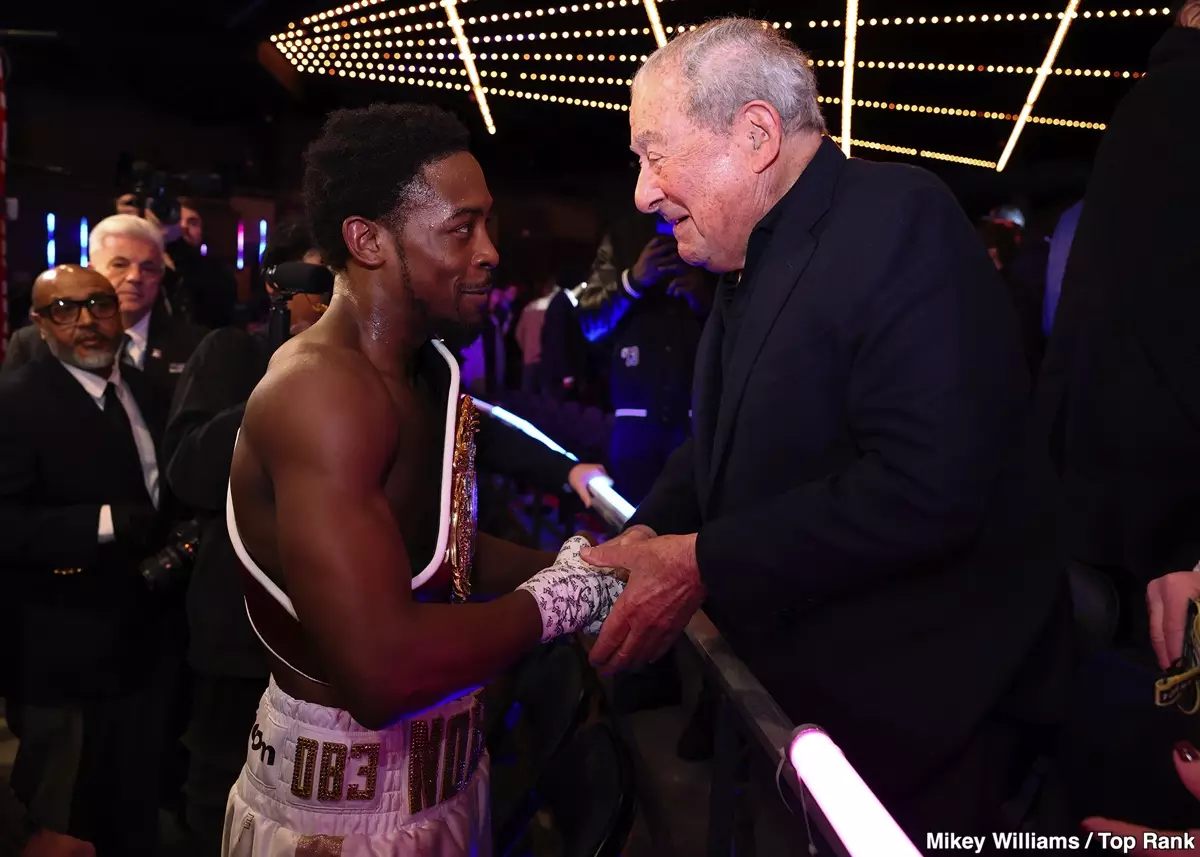Keyshawn Davis recently ascended to the world title arena with a fourth-round knockout victory over WBO lightweight champion Denys Berinchyk at Madison Square Garden, a venue synonymous with boxing legend. While the win certainly marks a milestone in Davis’s career, a deeper examination raises questions about his willingness to engage in riskier bouts that could solidify his legacy in the sport. As we look at the dynamics of his career decisions, it becomes evident that while he possesses the tools to be a leading figure in boxing, his current path resembles that of past boxers who prioritized safety over legacy.
Davis’s knockout of Berinchyk, while impressive, came against an opponent who many fans and analysts consider a less formidable challenge. Berinchyk was selected as a favorable matchup, following a trend where Davis appears to prefer softer opposition—such as previous opponents Miguel Madueno and Jose Pedraza. This approach stands in stark contrast to the bravado exhibited by past champions. Legendary fighters like Sugar Ray Leonard and Tommy Hearns took significant risks, often challenging themselves against the best available contenders early in their careers. For instance, Leonard had already faced legends like Roberto Duran and Wilfredo Benitez by the age of 25. Davis’s reluctance to challenge himself similarly suggests a more cautious, perhaps calculated, approach.
Interestingly, this choice to avoid high-risk fights has led to skepticism about Davis’s future trajectory in boxing. Unlike fighters who proactively sought out challenges to grow their skills and notoriety, Davis has opted for a route that many see as strictly business-oriented, potentially at the cost of his competitive spirit and legacy. He has notably steered clear of a match against Andy Cruz, a fighter who holds a psychological advantage over him, having won four times in their amateur encounters.
Comparative Analysis: The Adrien Broner Conundrum
Emerging from this careful matchmaking is an unsettling comparison between Davis and Adrien Broner, a fighter who similarly garnered titles through a blend of talent, assertiveness in marketing, and careful matchmaking. Broner won his first title at a very young age and added further belts rapidly, focusing on potentially lesser threats to ensure financial gain. Critics have labeled this strategy as a lack of ambition, implying that Davis’s trajectory is eerily reminiscent of Broner’s approach to his career.
In an era where fans crave excitement and genuine rivalries, Davis’s tactics may yield short-term financial benefits, but they risk stalling his long-term potential to become a face of boxing. While some may argue that his charm, charisma, and talent are enough to capture audience interest, the lingering questions about his willingness to engage with tougher competitors creates a narrative that may alienate hardcore boxing fans.
Another factor complicating Davis’s journey is his natural growth out of the lightweight division. Standing out as a physically imposing figure in his weight class, the idea of moving up to 140, 147, or beyond brings both opportunity and risk. However, the reluctance to challenge big names like Gervonta Davis and Vasily Lomachenko—potentially elite opponents—suggests that he may continue to forgo chances for impactful bouts. Moreover, boxing is a sport where legacy is built on not just titles, but also on the quality of competition faced, and Davis’s choices may hinder his ability to create compelling narratives around his career.
Former fighter Floyd Schofield Sr. articulated this sentiment succinctly by critiquing Davis’s journey as one primarily focused on acquiring belts rather than establishing a lasting legacy. The notion that Davis is thriving in an environment that prioritizes “easy belts” will likely raise eyebrows, especially when contrasting this approach with aspiring boxers who truly aim for greatness.
In an industry that valorizes not just victories, but the valor in pursuing difficult fights, Keyshawn Davis’s trajectory seems to be straddling the line between businessman and boxer. While he possesses immense talent and an appealing personality capable of attracting fans, the critical eye remains focused on the lack of high-stakes bouts. Should Davis continue on this path of calculated risk avoidance, he risks fostering a legacy defined by what could have been rather than what he ultimately became. The boxing world will watch closely, as both fans and analysts hope for a shift in strategy that sees him embracing the rigorous challenges that define the essence of a true champion.

